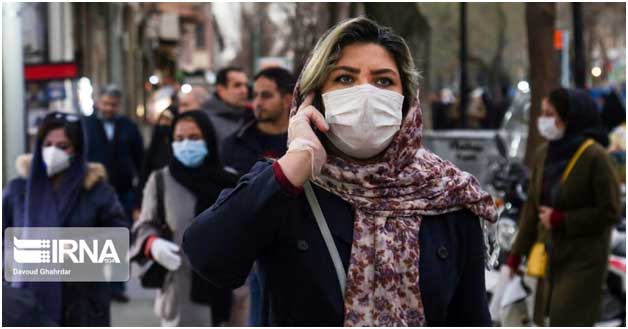How Will COVID-19 Affect Economies of Latin America & the Caribbean?
By Luis Felipe López Calva (IPS)

HAVANA TIMES – History shows that in Latin America and the Caribbean, volatility is the norm and not the exception and that the development trajectories of their countries are not linear.
The region has significant links to China, economic relations have skyrocketed in recent decades, particularly through trade, foreign direct investment, and loans.
The COVID-19 outbreak is a new potential source of volatility and a threat to the macroeconomic stability of Latin America and the Caribbean.
While it is still too early to fully understand its impact on China’s growth, and how it will result in a slowdown in our region, what we know so far is that COVID-19 is spreading at an accelerated rate and has caused a disruption to China’s economy.
The virus has spread to at least 117 countries, with more than 117,335 confirmed cases. It is very likely that the impact on China’s growth and commodity prices, besides, represents a shock to our region.
Latin America and the Caribbean have significant links to China, economic relations have skyrocketed in recent decades, particularly through trade, foreign direct investment, and loans.
Trade with China increased from US$12 billion in 2000 to US$306 billion in 2018 and is already the second trading partner. Three years ago, it represented nine percent of total Latin American exports and 18.4 percent of total imports.
It is not the same in all countries, but, for example, China represents 28.1 percent of total Brazilian exports, as well as 10.5 percent of Argentina’s and 32.4 percent of Chile’s.
Although China mainly imports primary products such as minerals and metals, agricultural products and fuels, its exports consist of machines and electrical equipment, textiles, chemicals, and metals.
Its six main trading partners in the region are Brazil, Argentina, Chile, Peru, Colombia and Venezuela, whose exports are concentrated in four products, which represent 75 percent of Latin American exports: copper, soy, crude oil, and iron ore.
Foreign direct investment and loans from China have increased over the past decade. Between 2005 and 2017, China represented five percent of total foreign direct investment–more than US$ 90 billion dollars.
According to the Inter-American Dialogue Public Policy Center, China has placed more than US$141 billion in loans since 2005, which represents more than the World Bank, the Inter-American Development Bank and the Development Bank of Latin America combined.
Venezuela is, by far, the largest recipient of these loans, with an amount of US$67.2 billion dollars since 2005, followed by Brazil at US$28.9 billion), Ecuador at US$18.4 billion and Argentina at US$16.9 billion.
Although the full extent of the impact of the coronavirus will ultimately depend on how well the outbreak is contained, China’s growth in the first quarter of the year is expected to fall sharply and recover later in the year.
While China has estimated its 2020 growth at six percent several analysts have revised their projections downward to between five and even 4.5 percent.
These shocks will likely be translated into Latin America and the Caribbean through trade, commodity prices and foreign direct investment. In terms of trade, a slowdown in Chinese demand for goods driven by an economic slowdown will have a strong impact in countries such as Brazil, Chile, and Peru.
Net exporters Argentina, Colombia, and Ecuador will also feel the impact to a lesser extent. History shows that in Latin America and the Caribbean, volatility is the norm and not the exception, and that the development trajectories of their countries are not linear.
The volatility arose with this new coronavirus testing resilience here and in China, that ability to return to a predetermined path of development in the shortest possible time.
Beyond the panic that has been unleashed, COVID-19 is a call to resilience in Latin America and the Caribbean.
—–
*Luis Felipe López-Calva is UN Assistant Secretary-General and UNDP Regional Director for Latin America and the Caribbean






Dramatically to put it mildly. The article concentrates its analysis solely on the initial exporter of COVID-19 (China) and does not go further to include other Western countries that have significant economic importance to Latin America and Caribbean.
Canada, as an example, sends roughly one million tourists to Cuba on an annual basis. Today – March 16/’20, Justin Trudeau, the Prime Minister of Canada, has called on all Canadian residents to come home immediately from all international destinations. Airlines have halted flights to many tourist destinations because of lack of passengers and some countries are closing their borders to foreign nationals.
Such dire, unfortunate circumstances will have major economic consequences for countries like Cuba, Dominican Republic, and elsewhere that rely heavily on the tourism dollar to sustain their fragile economies. Cuba’s major source of revenue is tourism. Imagine wiping that major source of revenue from the nations monetary coffers what impact that will have. Dramatic.
Canada has an economic free trade agreement with Chile. As of today – March 16/’20 – Chilean business leaders will be barred from entering Canada to do business because of the travel restrictions imposed by the Canadian Prime Minister. Likewise, Canadian business leaders are discouraged from foreign travel.
The end consequence is a tremendous slow down and loss of economic potential both ways – think hotels, restaurants, tourist sites, etc.
Latin American/Caribbean countries do not have the monetary fluidity of injecting economic stimulus into their fragile economies. The Canadian government can easily inject billions of dollars to help support small businesses so that they do not go bankrupt. The Canadian government can subside poor families if any one in a family loses a precarious job due to the virus.
When Western countries are suffering dire economic hardships, unfortunately, those hardships will be transposed to Latin America and the Caribbean region much like China’s trade, foreign direct investment, and loans all down graded significantly leading to less economic activity.